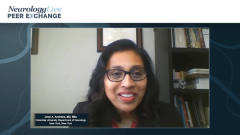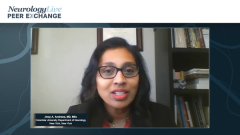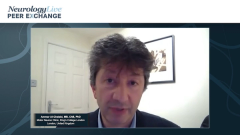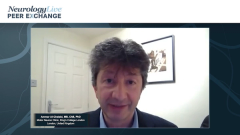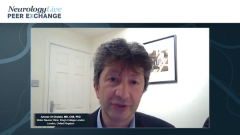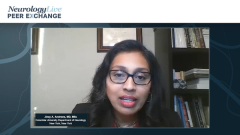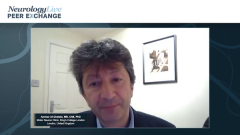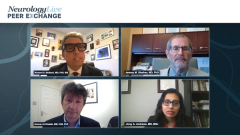
Diagnosing ALS: Common Mimics
Panelists provide insight into what primary care physicians should consider when differentiating amyotrophic lateral sclerosis (ALS) from conditions with similar presentations.
Episodes in this series

Richard S. Bedlack, MD, PhD, MS: You are all ALS [amyotrophic lateral sclerosis] experts, but the people who are going to be watching this program may be primary care doctors or general neurologists. Jeremy and Ammar, what are the most common ALS mimickers that they need to try to rule out before the patient gets to us?
Jeremy M. Shefner, MD, PhD: Thank you, I will answer that, but I first want to go back to a couple of things Jinsy said because it relates to that. She mentioned that we do not have a diagnostic test and then ran through a number of tests, but all of those tests are to rule things out, just as you said. They do not rule ALS in, they rule other things out. There is a small universe of ALS specialists, as you note.
The absolute best diagnostic test for diagnosing ALS is to see an ALS specialist because, despite all these different ways that people present, an ALS specialist can often recognize somebody when they walk in the door. Although there are a multitude of different presentations, they combine to produce incredibly characteristic symptoms. What should somebody be on edge for if they are a general practitioner? There are a couple of things.
As Ammar said, only about 25% of people present with problems in their face, tongue, or mouth: the bulbar symptoms. If they do, the road to a diagnosis should be pretty short. If you have somebody who has subacute onset of difficulty speaking or swallowing, there are some anatomic lesions that can cause that. But if you see a tongue that is moving slowly and not in a coordinated fashion, and it has evidence of spontaneous activity called fasciculations, which are involuntary muscle twitches in the tongue, the diagnosis of ALS may not be certain, but it is close to certain. That should be a hallmark sign. It should be a red flag, somebody coming in with trouble speaking and a slow, potentially fasciculating tongue. That is a big one.
Other hallmarks are a bit more subtle. People coming in with hand weakness is quite common. But if it is not specifically associated with any sensory change, if it is associated with significant loss of muscle bulk or atrophy, and if it is associated not only with weakness that seems to be due to muscle loss but weakness that is due to loss of coordination or spasticity, the combination of spasticity and atrophic muscles in the hand or elsewhere should be a signal for at least a neurologist to say, “We had better get that person to a neuromuscular specialist.”
The problem is that, despite all of our outreach in this regard, ALS is a rare enough disease that it is hard to ask a general practitioner to be aware of all these things. The general pattern in the United States is that a busy private practitioner who is a primary care doctor may see 1 or 2 cases of ALS in their career. Given that, even if they see something that is a bit atypical, they probably see from a dozen to 20 cases of carpal tunnel syndrome in a year. They probably see even more people with weakness or symptoms related to their back or neck. Asking practitioners to be sensitive to this set of symptoms is a hard ask. Figuring out how to do that in an appropriate way is a real challenge.
Richard S. Bedlack, MD, PhD, MS: Thanks.
Ammar Al-Chalabi, MB, ChB, PhD: The common mimics would be myasthenia gravis, which would be something that would be important to exclude. This is a condition where there is difficulty with neuromuscular transmission, and it could present in the way Jeremy has said, with slurred speech, although the tongue would not be fasciculating. And it would be difficulty with the hands, for example.
Primary muscle disease or secondary muscle disease can present mimicking ALS because it can look like a lower motor neuron problem, although the person would not usually have atrophy as a striking thing, and there should be no spasticity. It would be weakness without the sensory change that Jeremy mentioned. Of course, structural changes, as Jeremy said, anatomical problems in the brain stem or in the spinal cord can mimic ALS, and that is what the imaging Jinsy mentioned is for.
Richard S. Bedlack, MD, PhD, MS: Thank you for watching this NeurologyLive® Peer Exchange. If you enjoyed the content, please subscribe to our e-newsletters to receive upcoming Peer Exchanges and other great content right in your inbox.
Transcript Edited for Clarity
Newsletter
Keep your finger on the pulse of neurology—subscribe to NeurologyLive for expert interviews, new data, and breakthrough treatment updates.

